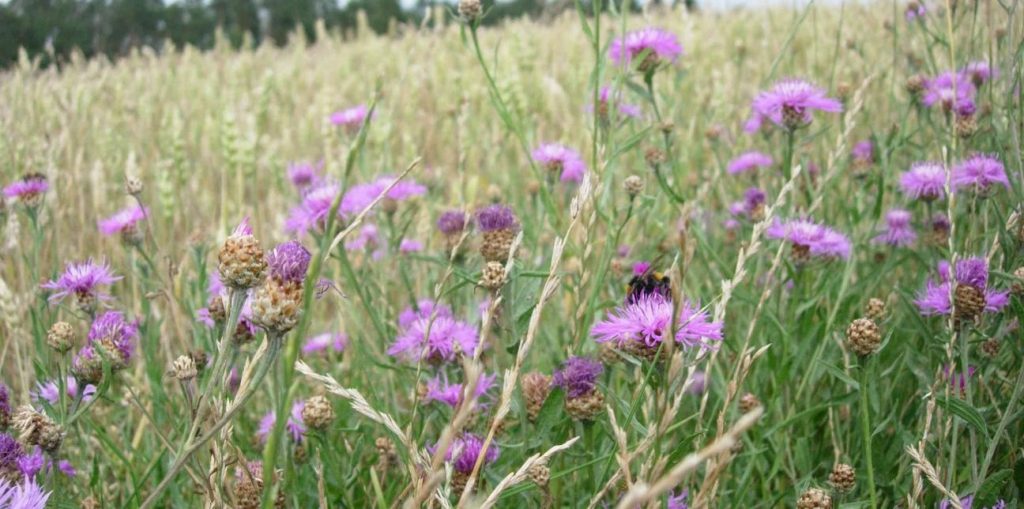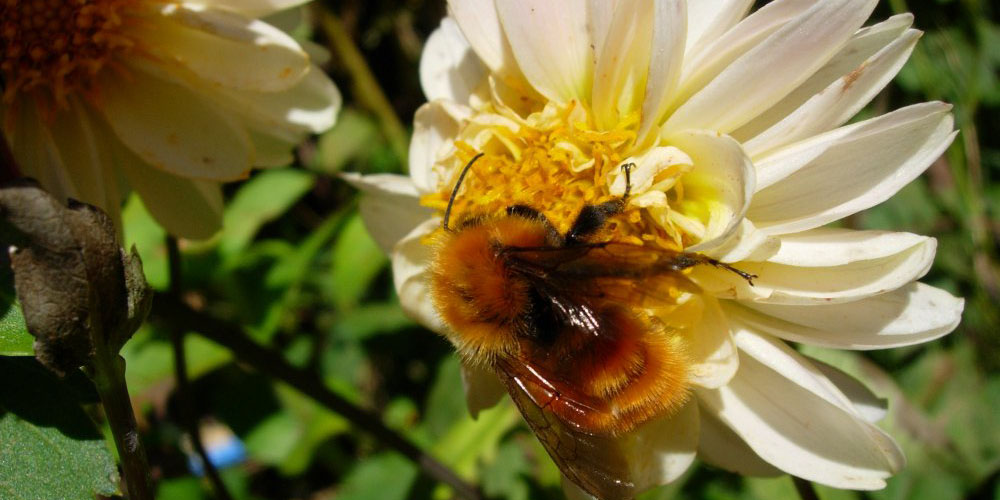These days I’m thinking and talking much about threatened insects, mainly about bees, obviously. I’m always trying to explain, why we need more than some insect hotels and bee-friendly flowers to stop insect decline. As I explained in my last post, there are different levels to “saving the bees” or insects or whatever. Individual actions are great and necessary, but at the same time, we need also some systemic changes. We need the community and the political level.
Irrespective of the level we’re on, all decisions and measures ideally should be science-backed. This isn’t always possible, because we don’t know enough about insects. However, we should take into account what we already know and make reasonable decisions based on this. And adapt, adjust and change if necessary, including new data and research.
What do we know?
A recent review of long-term surveys on insect populations states that about 41% of all insect species are declining. This is twice as much as the decline of vertebrate species and happening at a pace eight times faster. This is scary. Even more so when you look at the map showing where the data come from: most studies were done in Europe, here mostly in the UK, followed by North America. Let’s put it this way: some of the hot spots of insect diversity are clearly missing in this picture. For instance, bees are most diverse in regions with a Mediterranean climate, but data are missing even from Southern Europe. Let alone from Northern Chile, South Africa or other hotspots. In Australia, there was a bee monitoring, but… dealt with honey bees. They’re not even native there!
In other groups, things don’t look much better. In only ten of the about 30 insect orders, long-term surveys on species richness and abundance are available. Moths and butterflies are most studied, followed by bees and beetles. Hoverflies represent all flies, which clearly isn’t enough. They’re great and important pollinators and predators as larvae, but what about all the other groups? The predators, parasites, pollinators, and highly important scavengers? What about orders not studied at all? Like the springtails, highly important for soil formation and health?
So, what do we know? Almost nothing. But enough to begin to develop solutions and readjust existing practices and measures. We depend on insects, for pollination, but also for healthy soils and water quality. And less selfishly human: insects are food for many birds, bats, hedgehogs and many other animals. They starve without insects.
About the causes of insect decline
Let’s talk about the causes: when I get questions about threatened insects, we soon talk about pesticides. But this is only part of the story, as the review shows. The main driver of insect population declines are habitat changes; almost half of the analysed studies state that. But here it becomes tricky because agriculture plays a role in this. Humans have always modified their environment. Agriculture is one of the ways they did. However, until the 1960s, this didn’t have negative effects on insects. Farming rather created habitat, with open spaces, hedgerows, field margins, and other structures. It was only after the “green revolution” that insect populations began to decline. It’s highly productive, intense agriculture, with monocultures, pesticides, fertilizers etc.
Habitat loss also occurs due to urbanisation. Near human settlements, insect communities are simpler, though partly counterbalanced by gardens and parks. Invasive species and global warming are other causes of insect decline.
All these factors aren’t isolated from each other, they are partially interconnected. This is another reason why I talk so much about threatened insects and saving bees these days: we can’t reduce everything to some pesticides. Even if we do give agriculture the main responsibility:
Agriculture > intensive farming > pesticides > neonicotinoids and glyphosate
It’s also fertilizers, monocultures, homogeneous landscapes. If we focus only on pesticides and on having insect hotels in our gardens, we’re just treating symptoms, not the disease.
Habitat farming – stepping back to see alternatives
In the review on long-term insect losses, the authors claim for “redesigning agriculture” as a solution. This seems a good idea to me, I’m always a friend of taking a step back and rethink the situation when things don’t work. The current discussions and arguments often don’t help much, it’s more about mutual recriminations than about solutions.
As I said before, farmland is an important habitat for many species. Many species in Central Europe need open spaces which wouldn’t exist without agriculture. In a talk I heard recently, farmers were part of the habitat management: with their machines and agricultural techniques they created structures for insects and other animals. There are many other concepts for sustainable agriculture, making farmers part of the solution, not the problem.
Helping threatened insects, however, will look different in Europe than in South America, different in temperate regions or in the tropics. There isn’t a one-fits-all solution (is there ever such a thing?). Every situation has to be considered carefully, monitored, adjusted, and evaluated. Practical conservation measures and research, both going hand in hand.
After stepping back to see the alternatives, we also have to go a step further. We need to know what’s going on beyond Europe and North America. Reading the review, I thought about how much material there may be in languages other than English that may shed some light into the dark. How many long-term surveys on insects may exist in Spanish, Russian or Chinese? Besides this language problem, however, it’s time to start studies in the biodiversity hotspots of the world, to include also other insect groups and to monitor the consequences of the losses. Lots of work for creating and adapting solutions.



